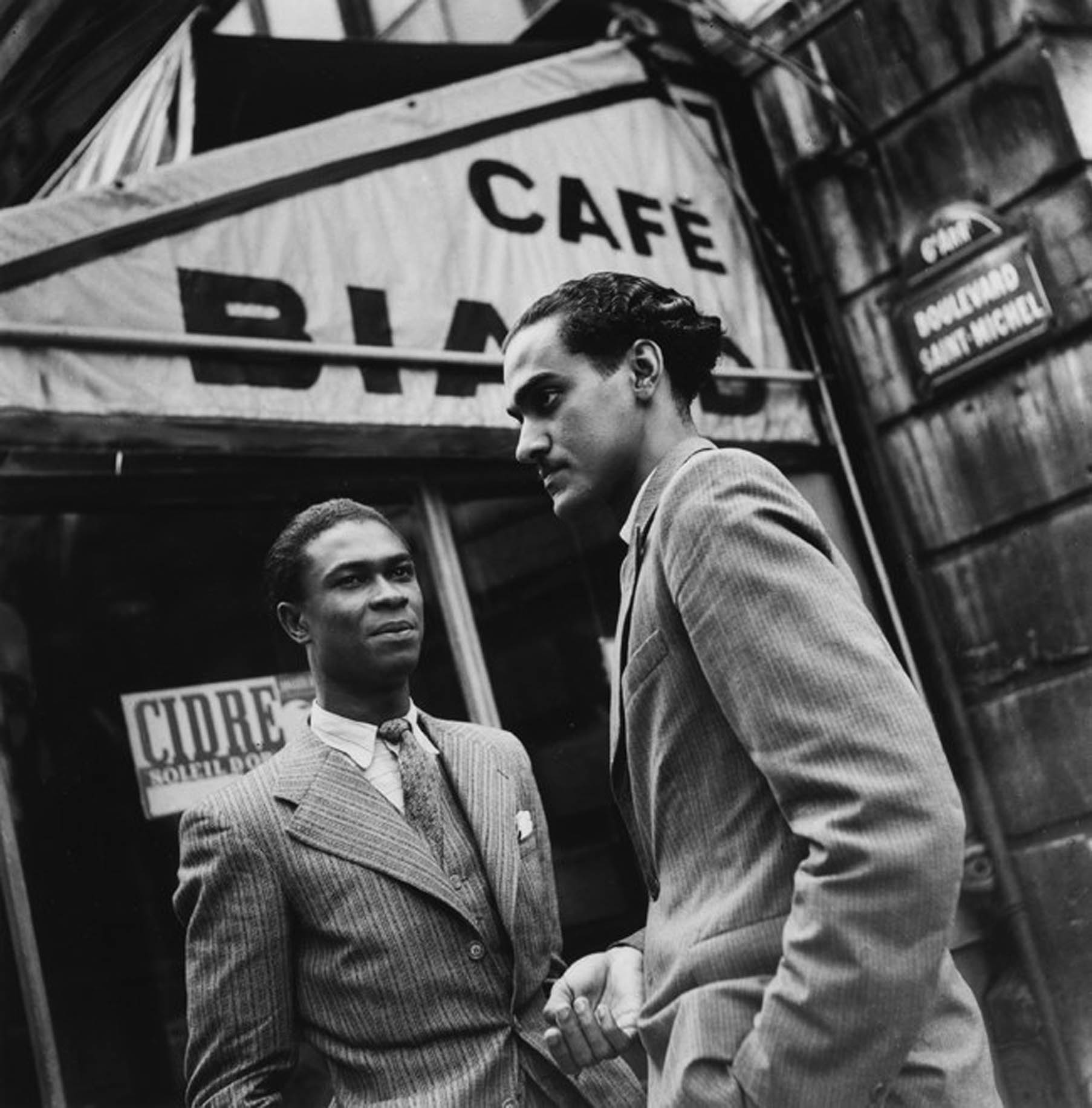Starting today, the Dutch Institute in Paris shows Gare du Nord, an exhibition that retraces Paris from the 1920s to the 1960s as portrayed by photographers from the Netherlands. Sensitively curated, this is a very exciting show, well worth the visit for anyone with a love for photography, Dutch art and culture, or Paris. And why, indeed, should one not love all three!
This show, which was first presented at the Fotomuseum Den Haag last autumn and winter, is a refined and discriminating selection of works, presenting very different subjects and artistic approaches.
Clearly a great deal of care was put into the search, with works sourced from a broad set of museums, other institutions, and private collections. Equal care was put in the arrangement and hanging of the pictures. This, together with the indisputable underlying quality of the art, makes for a very satisfying aesthetic experience.
The exhibition has managed to capture, through Dutch eyes, the excitement of Paris at a time when it was still a place where one felt anything was possible.
Gare du Nord opens with some of the most beautiful images of the show, the highly ethereal pictures of Francis Kramer taken in the 1920s, including a hazy, sunny street shot taken in front of the Gare du Nord.
Johan van der Keuken is extremely well represented – and justifiably so. Among his pictures is a magistral, operatic scene of a lone woman in an overcoat descending the vast sweep of a staircase into the Saint-Michel metro station. His largest print is an image touching in its impossible Parisian typicalness: an impeccably-dressed older couple dances in the street on Bastille Day while three eqully well-groomed youngsters look on from under a scaffolding.
One of the aspects of the Dutch gaze that comes out is a particular graphic sensibility. Aart Klein’s shot of the metal trusses supporting the roof of the Gare de Lyon, for example, has saturated blacks that render a beautiful, abstract pattern.
Most of the pictures are markedly artistic in orientation, but some veer toward the photoreportage. There is, for example, an interesting set of pictures by Carel Blazen showing demonstations in the charged environment of Front Populaire Paris.
A section is dedicated to portraits of famous people. Among these, an unexpected discovery was Fred Brommet’s picture of a superbly intense, boyish Orson Welles. Another room shows the glamorous side of fashionable Paris, among which the most captivating is a shot of Ilse Verkroost on the Boulevard Saint-Germain by Wim van der Linden, with a gendarme in the background.
The show ends with two films. Paul Schuitema’s 1939 De markthallen van Parijs is a veritable ballet where the dancers are the workers of Les Halles, with the choreography composed of the precise movements of their daily tasks. Joris Ivens’ 1927 Verkeer te Parijs also studies the aesthetic of movement – a theme completely in keeping with the artistic concerns of the era – this time through the mechanical motion of the cars in Paris’s streets.
Gare du Nord runs at the Institut Néerlandais until July 29th, 121 rue de Lille (métro: Assemblée Nationale). It is open every day except for Monday, from 1 PM to 7 PM. The exhibition is accompanied by a book by Wim van Sinderen and Willemijn van der Zwaan, in Dutch, also named Gare du Nord, published by Uitgever Ludion.
With thanks to the Institut Néerlandais, a sampling of pictures from Gare du Nord:
Emmy Andriesse (1914-1953)
Juliette Gréco
Environ 1948
© Collections particulières de la Bibliothèque de l’Université de Leyde
Ata Kandó (1913)
Gare du Nord
1957
© Nederlands Fotomuseum Rotterdam
Marcel Minnee (1941) Gare du Nord
1963
© M. Minnee, La Haye
Emmy Andriesse (1914-1953)
Etudiants étrangers au Quartier Latin
Paris
1938
Related posts:








One thought on “Gare du Nord at the Institut Néerlandais”